Last Updated on May 27, 2020 by Heather Hart, ACSM EP, CSCS
If you’re looking for a first time trail half marathon training plan, dirt and trail loving coach Heather is here to help.
Personally, I’ve always found the half marathon to be a really enjoyable distance. It’s short enough that you can push yourself to the limits of your aerobic threshold, but still long enough to feel like a true endurance event.
And if you’re already a distance runner looking to dip your toes into the trail running world, the half marathon distance is a perfect place to start.

Who is This Trail Half Marathon Training Plan For?
I designed this beginner trail half marathon training plan with newer trail runners in mind. The goal of this plan is to safely build the endurance required to run 13.1 miles, while also focusing on the specific needs of trail running. That includes not only becoming comfortable with running on trails, but purposefully incorporating hill work into your training routine.
Ideal Baseline Fitness Before Beginning this Training Plan:
Before beginning this trail half marathon training plan, runners should be able to comfortably cover a 4 – 5 mile long run on trails as well as covering at minimum, 15-20 miles per week for multiple weeks, while remaining injury free.
Should I Complete a Road Half Marathon First?
There are absolutely ZERO rules that say you have to complete a half marathon on the road before training for or attempting a trail half marathon! As long as you put in the specific training effort needed to run 13.1 miles on trails, your first official half marathon can certainly be off-road.

Should I Work With a Coach or Use a Training Plan?
Running coaches are not reserved only for elite athletes – any runner, with any running background or experience, can benefit from working with a running coach
However, there are also a number of reasons why a runner may prefer to use a training plan, rather than work one-on-one with a coach.
Ultimately, the decision to work with a coach or follow a training plan (like this one) is up to you. If you aren’t sure, I highly suggest reading the post “Need A Running Coach? 25+ Expert Tips To Find Your Perfect Coach”.
Alternatively, feel free to reach out to us at Hart Strength and Endurance Coaching to see if working with one of our experienced trail running coaches might be a good fit for you.
How is Training for a Trail Half Marathon Different from a Road Half Marathon?
I’ll be the first to admit that you don’t necessarily NEED a trail specific training plan to finish a trail race, but in my experience, it helps.
This is because the nuances of trail running are very different from road running. Having a training plan that incorporates trail specific workouts will help you feel prepared for the terrain of race day, and effort required to complete a trail half marathon.
The major difference between training for a trail half marathon compared to a road half marathon is that you will need to do some of your training runs on trails.

In this plan, I have designated specific days to run on the trail. It’s important that you become comfortable with the nuances of trail running, such as learning how to not trip on rocks, or how to duck last minute under spider webs.
New to Trail Running? Start Here:
If you’re completely new to trail running, you may be overwhelmed by the prospect of stepping off the pavement and onto the trail. Don’t worry – it’s not nearly as scary as it may seem!
For true trail beginners, I highly recommend giving the following articles a read before starting your half marathon training journey:
- How To Start Trail Running: 10+ Tips To Transition From Road To Trails
- Trail Running Gear For Beginners: What You Really Need (And What You Can Skip)
- 8 Trail Running Safety Tips Every Runner Needs To Know
- 6 Common Trail Running Fears (And How To Get Past Them)
What Type of Trails Should I Train On?
Here’s a few things to consider when choosing the trails you train on:
- Race Course Specificity: Not all trails are created equal. To set yourself up for race day success, you definitely want to spend time on trails that mimic the terrain of your goal race course. So, if your half marathon is on gnarly, root covered single track, but you’ve spent most of your time on dirt covered cart path, you’re going to want to seek out similar race terrain to train on.
- Trail Experience: Newer trail runners are going to need to spend more time training on trails than a more experienced trail runner. The more experience you have running on trails, the higher developed your sense of proprioception (balance, equilibrium, etc) and general trail running skills will be. This comes with time – more experienced trail runners can afford to spend less time training on trails IF necessary.
How Often Should I Run on Trails?
In general, I tell my runners to aim for about 30% of their weekly mileage on the trail. If you’re running a 20 mile week, that equates to about 6 miles on trail.
Again, specificity matters: more trail running is better, if you can make it happen.
Is Trail Running Harder than Road Running?
In many ways, trail running may initially feel harder than road running. This is because:
- Dirt, sand, and gravel trails absorb more force and provide less rebound compared to pavement or concrete, your muscles (such as the quadriceps, hip flexors and gluteus muscles) are forced to work harder in order to run at the same pace.
- The terrain of many trails tends to vary greatly compared to that of road running – especially if you are running on a trail that also serves as a mountain biking trail (lots of switchbacks and short, punchy hills!)
- Speaking of the terrain, trails tend to have more obstacles in your way that you have to maneuver over, around, or even under. Rocks, roots, downed trees, and even streams will keep you on your toes, making trail running a mentally more stimulating (or difficult, depending on how you choose to view it!) task compared to road running.
What if I Can’t Run on Trails?
Now, I realize that not everyone has easily accessible trails to run on. If that is the case, do your best to incorporate trails or off road running as much as you possibly can, but don’t stress if you can’t do every trail workout ON the trails.
Remember: logging miles on ANY surface is going to improve your cardiovascular endurance.
My neighborhood “trails” are actually abandoned, paved, golf cart paths.
Running speed or interval workouts on the road or treadmill, where these smooth surfaces can challenge your body to practice an even faster pace, as well as cadence/turnover, without obstacles slowing you down, can help make you a faster and stronger runner. You can also practice hill repeats and climbing on these surfaces as well
7 Expert Tips for Your Trail Half Marathon Training Journey:
Before diving into your trail half marathon training journey, here are ten important tips to keep in mind:
1. You Need to Run on Trails (some of the time)
I know I’m beginning to sound like a broken record here, but as mentioned above, you should practice running on trails similar to that of your race terrain, at least some of the time.
This will help your body get used to the nuances of trails, from both a physical and neuromuscular point of view. Trail running – especially on more technical terrain – does not always come as naturally as one might expect. Having a few training sessions on the trail before race day will make a world of difference in your comfort level during your trail half marathon.
2. Get the Right Shoes
Take the time to get fitted for the right pair of shoes for you and your body, if you haven’t already. You are about to put a significant amount of mileage on your body – and your feet – over the next 20 weeks.
Starting a new training cycle with a fresh pair of well fitting shoes will potentially ward off any pain or discomfort due to common shoe running issues.
Related posts:
- Do I Really Need Trail Running Shoes?
- 5 Running Shoe Mistakes You Could Be Making Right Now
- Aftermarket Insoles For Running Shoes: Do You Really Need Them?
3. Don’t Compare Your Trail Pace to Your Road Pace
Chances are your trail running pace is going to be slightly – if not significantly (depending on terrain) slower than that of your road running pace. And there’s a number of reasons for this.
First of all, as mentioned above, the terrain of a trail is typically much softer, and will absorb more force and provide less rebound compared to pavement or concrete. This forces your muscles to work harder in order to run at the same pace.
Second, the terrain, such as hills, rocks, or even sharp corners can slow your momentum.
Actual terrain I had to navigate/ climb during a trail marathon. That will slow your average pace!
Lastly, no two trails are the same. So you might run a 1:45 half marathon on a flat, wide open trail….but it takes you 3 hours to cover the same distance on a course that ascends a few mountain peaks.
4. Pick Up Your Feet!
The secret to avoiding falls in the first place? Pick up your feet! I think this is one of the hardest transition factors for many road runners. On the road you only have to look out for the occasional pothole.
On the treadmill? Nothing should get in your way, you can shuffle all day, even as your legs get tired, with nary a worry but potentially scuffing the tread on your sneakers.
If you shuffle on the trail, however, you are going to fall. So practice looking ahead at the trail in front of you, and really picking up your feet.
5. Train With Your Gear
Practice with the gear you intend to use during your trail marathon. Race day should not be the first time you try on your hydration vest, or a new handheld water bottle.
While you certainly don’t need to practice with these during every workout, incorporating them into some of your workouts will ensure you are able to comfortably and efficiently use them on race day.
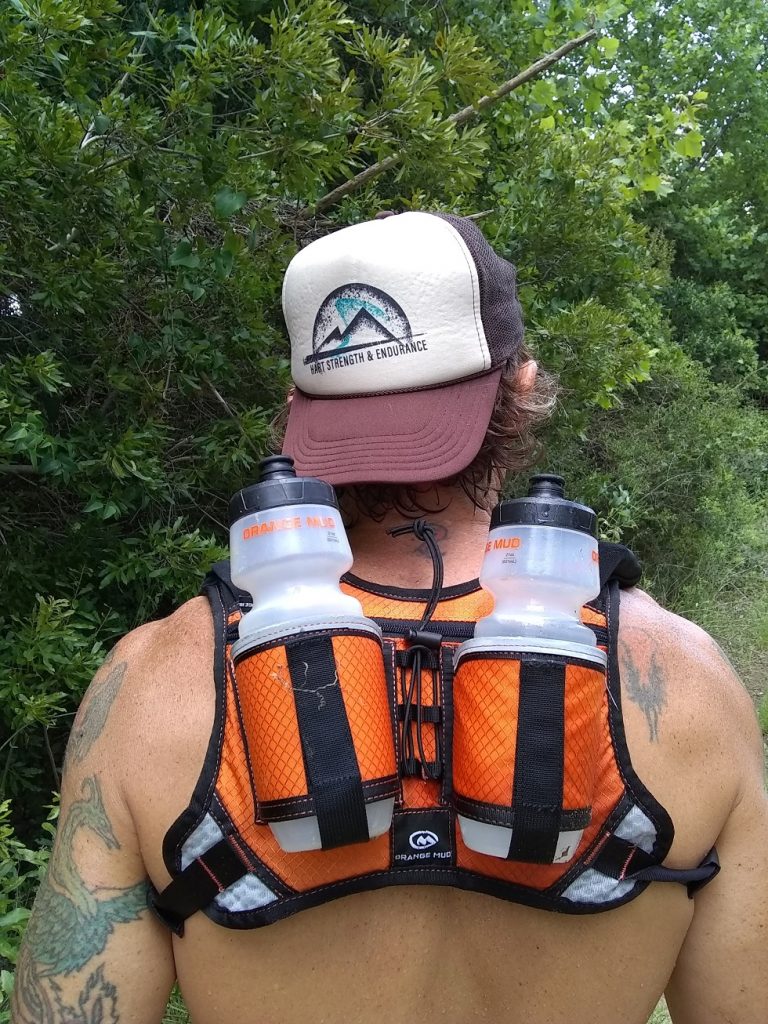
Related Post:
6. Learn Trail Running Etiquette
Following basic trail running etiquette ensures an enjoyable experience for all trail users, as well as ensuring the integrity of the trail for future users.
- Follow all trail markings, and heed to signs
- Stay on trail
- Stay to the right, pass on the left
- Yield to slower traffic
- Leave no trace: carry out what you carry in
- Leave wildlife alone
- If you use music, keep it low
For a more in-depth explanation on trail etiquette – and why it’s so important – please check out the post Trail Running Etiquette Tips.
7. Know How to Stay Safe on Trails
Let’s be honest, almost everything fun and exciting in life is somewhat inherently risky. Trail running is no different. There are indeed a number of things that could go wrong when running on trails, from simply tripping over a root, to getting caught above the tree line in a storm.
Visit the post 8 Trail Running Safety Tips Every Runner Needs To Know to learn basic trail running safety tips to help minimize the risks of danger while trail running
In this plan, I have designated specific days to run on the trail. It’s important that you become comfortable with the nuances of trail running, such as learning how to not trip on rocks, or how to duck last minute under spider webs.
Now, I realize that not everyone has easily accessible trails to run on. If that is the case, do your best to incorporate trails or off road running as much as you possibly can, but don’t stress if you can’t do every trail workout ON the trails. Miles on the road or treadmill are better than no miles at all.
On the other hand, if you have trails that are easily accessible, and you want to run more or even ALL of your workouts on the trails: go for it! The more time you spend on the trails, especially trails with terrain similar to that of your planned race, the better.
About This 12 Week Trail Half Marathon Training Plan:
Here are the nitty gritty details of the time commitment, training structure, and types of workouts included in this 12 week trail half marathon training plan
The plan includes only 4 runs a week, all with specific purpose. There’s one day of active recovery, one day of strength training (though I always encourage more!) and one day of complete rest.
Please note: the strength training and active recovery play a vital role in the training program. These are not “days off” from training, but rather, another opportunity to make your body stronger. Please don’t skip them.
Every fourth week, you have a cutback week. During this week, you’ll have a significant decrease in mileage and effort.
For some, these weeks are a welcome break. Others may fear that these cutback weeks will be detrimental to their progress. This couldn’t be further from the truth. Your body needs these recovery weeks to heal, and allow you to continue making progress. Please adhere to these cutback weeks!
Monday: Core & Balance Strength (No Running)
I can hear it now…”Wait this is a running plan, why are we starting out by NOT RUNNING?”. Hear me out: with my clients, I almost always make Monday a rest day from running, to help the body recover from the longer workouts of the weekend. However, it’s also a perfect opportunity to start your training week out on the right foot by investing time into strength and injury prevention.
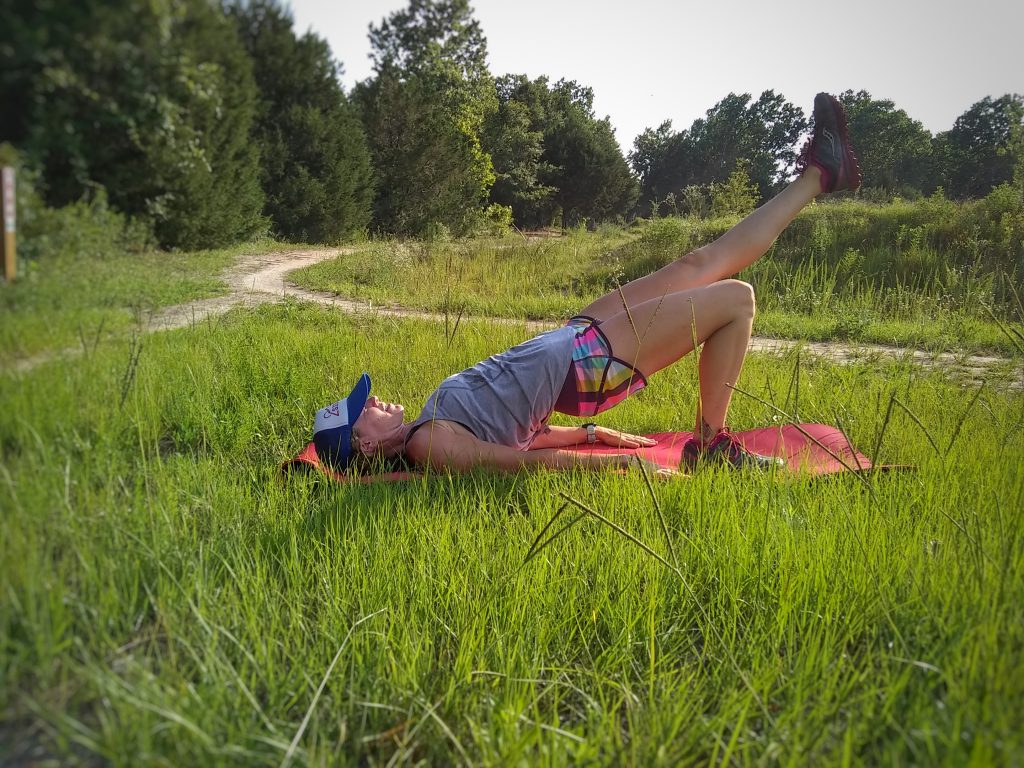
I recommend 30-60 minutes of core and hip strength, as well as lower leg stability / balance work. If you have a routine you already love, by all means, do that. If you are looking for something, try these:
- 6 Lower Leg Strength, Stability, & Balance Exercises for Trail Runners
- 8 Core & Hip Strengthening Exercises for Trail Runners
Complete Beginner Strength Training Workout For Runners
Tuesday: Trail Base Mileage
As the principle of specificity states, you must repeatedly perform a specific skill in order to get better at it. As mentioned above trail running presents it’s own set of skills compared to road running, so it’s important to practice.

Your trail base mileage workouts should be done at an easy, conversational pace. If you are heart rate zone training, I’d recommend spending the majority of your time in zones 1 & 2. Obviously your heart rate may spike when climbing hills, which is normal. But try to allow the heart rate to return to that aerobic zone for the majority of these workouts.
Wednesday: Hill or Speedwork
On Wednesdays of build weeks, you’ll have either a hill or speedwork session programmed. The hill workouts are especially helpful for those running a hilly trail half marathon course, but training in more flat, rural areas.
For hill repeats, ideally a larger hill (one that takes upward of 60+ seconds to summit) is ideal. It is important to focus not only on proper uphill running form, but downhill as well. I think a lot of people underestimate how much the eccentric muscle contractions of downhill running can hurt if you don’t properly train for it!
This workout will be one of the tougher workouts in your week. Listen to your body: if anything feels off, adjust this day to become another easy, base building run instead.
Thursday: Base Mileage, Graduating into Tempo Runs
For the first five weeks, Thursday runs will be a continuation of base building runs. Again, these are done at conversational pace.
During week six, you’ll add in a tempo pace work. Your tempo pace is a pace about 25 to 30 seconds per mile slower than your current 5K race pace. If you are unsure of what that is, you can simply run by effort. Tempo effort should be sustainable, but moderately difficult.
Thursday runs can be done on any surface (road, trail, treadmill, etc.)
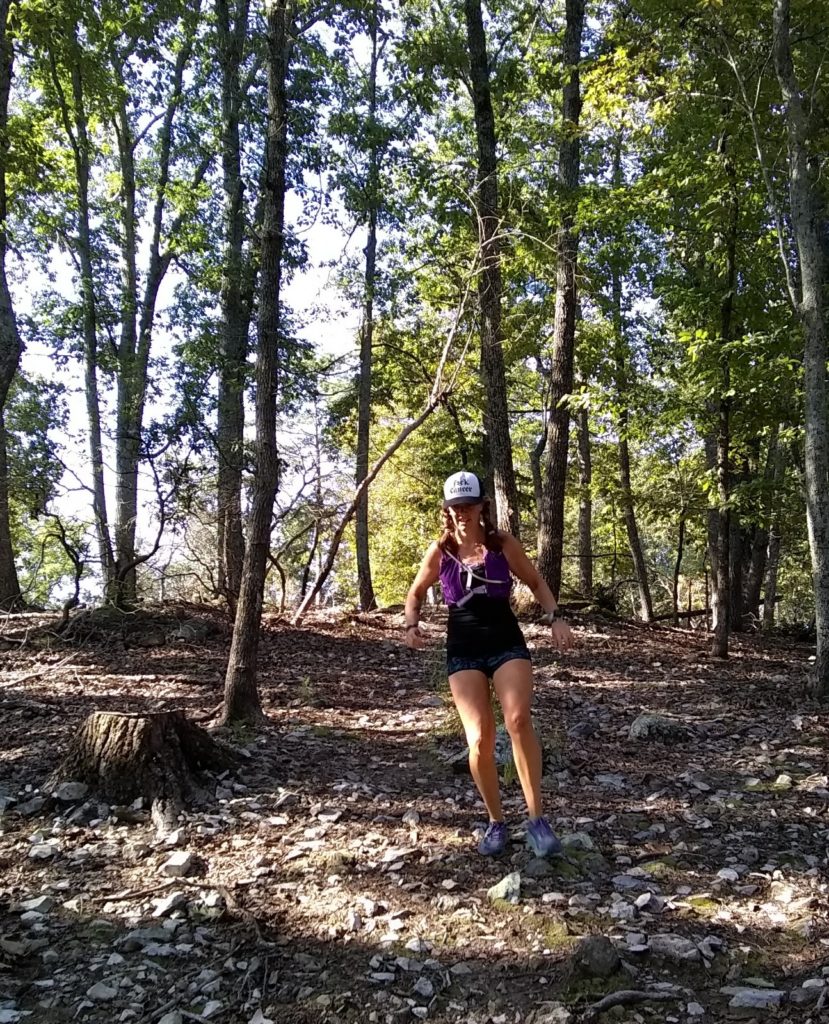
Friday: REST
Fridays are for rest! Please take this day off from exercise. A neighborhood walk with your dog, gentle yoga or stretching is fine, but this day should truly be for rest.
A common misconception among many runners is that more running = faster runner, and therefore, many runners loathe rest days for fear that time off will make them lose progress.
Quite the opposite is true: rest days are an integral part of the training process. During rest days, your body recovers from the physical stress of workouts, rebuilds damaged tissue, and becomes stronger.
Saturday: Long Run
Long runs are truly where your body adapts to running for long periods of time, physically and mentally, and are a cornerstone of distance training.
Further, long runs are the perfect “dress rehearsal” for your race. Long runs give you an opportunity to experiment with – and perfect – nutrition and hydration plans, anti chafing products, new shoes or shorts…you get the idea.
Long runs should be done at an easy effort pace (or, Zone 1 &2 as mentioned earlier).
Sunday: Active Recovery
Every Sunday (and Wednesday during cutback weeks) is a scheduled active recovery day. These workouts are designed to help promote blood flow, encourage healing, stimulate cardiovascular endurance, but remain low impact. Workouts like: swimming, biking, hiking, yoga, elliptical, etc. are all great options.
Keep the effort on the lighter end. If your body is exhausted and you are in need of a rest day, you can substitute the active recovery days with rest instead.
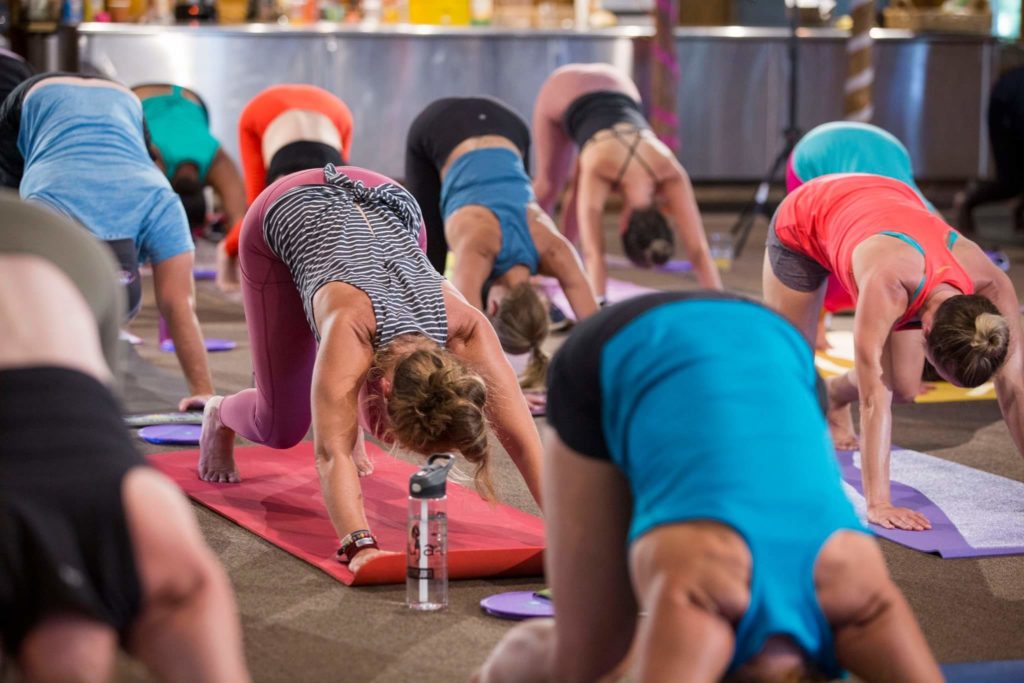
DISCLAIMER:
The following training plan is designed for educational purposes, and is not a prescribed training plan for any particular individual. While I am a certified exercise physiologist and RRCA running coach, and have designed this training plan with safety in mind, you should understand that when participating in a trail half marathon training program, there is the possibility of physical injury. If you engage in this training plan you agree that you do so at your own risk, are voluntarily participating in these activities, and assume all risk of injury to yourself. You should consult your physician or other health care professional before starting this or any other fitness program to determine if it is right for your needs.
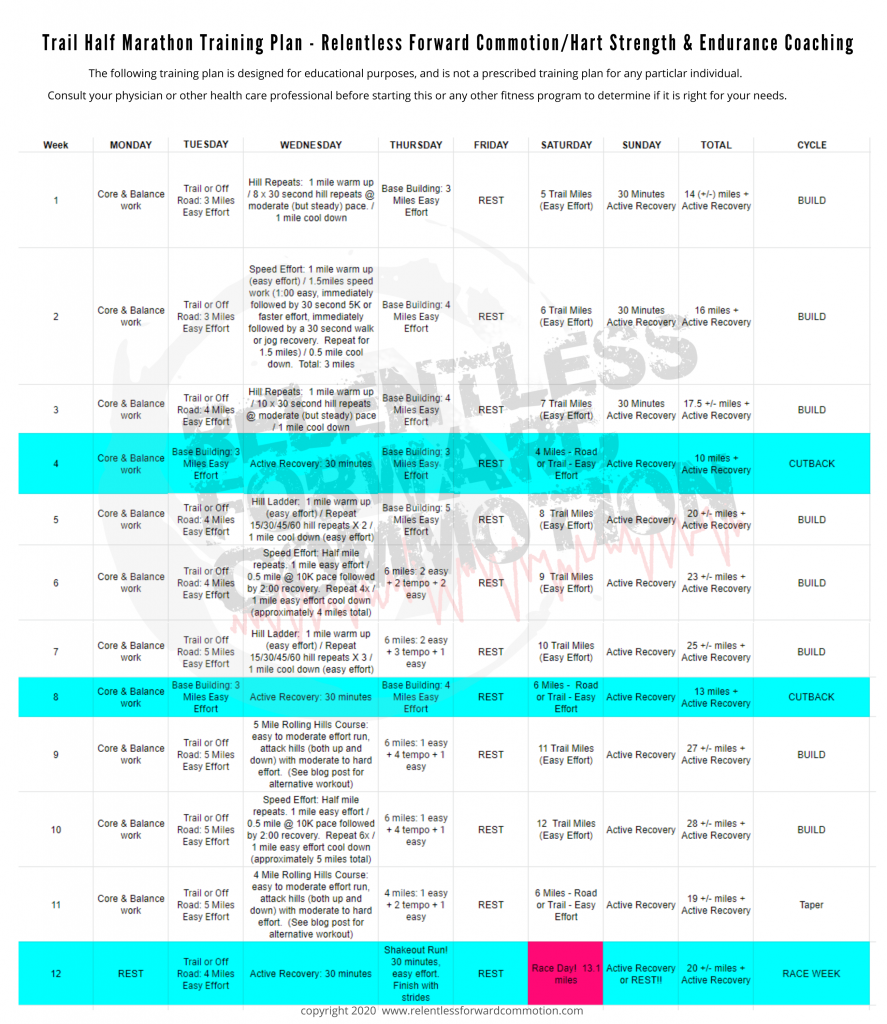
Be sure to check out the post What To Expect At Your First Trail Race before race day!
Tackling a trail half marathon is an awesome experience. It is my hope that this training plan helps you not only safely reach the starting and finish line of your trail half marathon, but that you enjoy the entire training process.
If you need – or want – more specific help, Hart Strength and Endurance Coaching would be more than happy to discuss the possibility of one-on-one coaching to give you a more detailed outline and support to reach your trail running goals.
Happy Trails, my friends!

Heather Hart is an ACSM certified Exercise Physiologist, NSCA Certified Strength and Conditioning Specialist (CSCS), UESCA certified Ultrarunning Coach, RRCA certified Running Coach, co-founder of Hart Strength and Endurance Coaching, and creator of this site, Relentless Forward Commotion. She is a mom of two teen boys, and has been running and racing distances of 5K to 100+ miles for over a decade. Heather has been writing and encouraging others to find a love for fitness and movement since 2009.

Tiffany
In the week 9 workout, for Wednesday, you mention an “alternative workout” – is that just referring to the “just run more easy build up miles” note at the end of the Wednesday section?
Been following this plan for a nice little January 2022 trail half marathon (and to keep my butt moving through the winter, even swapping out some runs for some long xc country ski workouts), it’s been a great plan, thank you!
Katie
If I were to add more strength training to the 12 week plan, which days would you recommend I add it to?
Fern
Hi! Thank you so much for publishing this plan—it’s badass and I’m excited to try it. I’m curious why the long days are so long compared to other training plans? Or why they are nearly twice the goal length? As en endurance runner I love to see the long days in a trail training plan, just curious as to the rationale and advantages. Thanks again 🙂
Heather Hart, ACSM EP
Hi there! I think you might be reading it incorrectly. The longest long run is 12 miles. If you are looking at the very far right column, that number is the weekly TOTAL mileage.
Beth
I was wondering the same thing as Fern – am I reading it right, are some long runs nearly double the length of the goal distance? Or is there an error, and it’s supposed to be km, not miles?
Heather Hart, ACSM EP
Hi there! I think you might be reading it incorrectly. The longest long run is 12 miles. If you are looking at the very far right column, that number is the weekly TOTAL mileage.